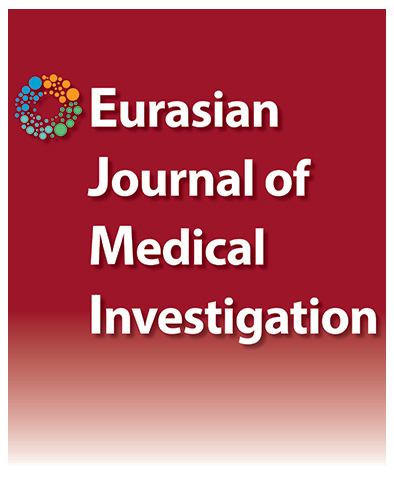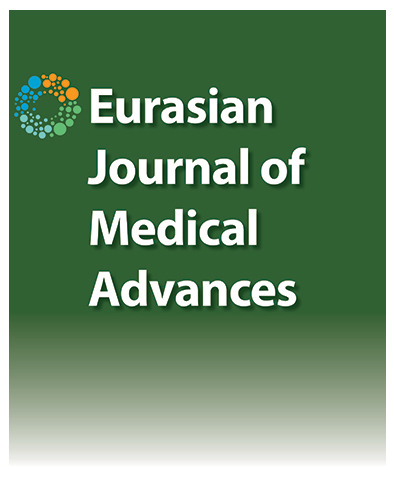The Predictive Value of Urinary HMGB1 Level in the Diagnosis and Prognosis of Renal Cell Carcinoma
Mehmet Solakhan1, Necla Benlier2, Osman Barut3, Hülya Çiçek4, Özlem Nuray Sever5, Mustafa Yıldırım61Department of Urology, Hasan Kalyoncu University, Gaziantep, Türkiye2Department of Medical Pharmacology, Sanko University Faculty of Medicine, Gaziantep, Türkiye
3Department of Urology, Medicalpoint Gaziantep Hospital, Gaziantep, Türkiye
4Department of Medical Biochemistry, Gaziantep University Faculty of Medicine, Gaziantep, Türkiye
5Department of Internal Medicine, Medicalpark Bahçelievler Hospital, İstanbul, Türkiye
6Department of Internal Medicine, Sanko University Faculty of Medicine, Gaziantep, Türkiye
Objectives: To investigate the diagnostic and prognostic value of HMGB1 when used as a urinary biomarker in patients with renal cell carcinoma.
Methods: The study was conducted in a total of 99 participants including 34 patients diagnosed with Renal cell carcinoma [RCC], 34 patients with an acute urinary tract infection [UTI] and 31 healthy controls.Urinary HMGB1 levels of the study groups were evaluated. Urinary HMGB1 levels and tumor diameter among patients with different subtypes of renal cell carcinoma were comparison.
Results: Urinary HMGB1 levels differed significantly among the three groups [p<0.001]. Pairwise comparisons revealed statistically significant differences between RCC and UTI groups [p<0.001] and between RCC and control groups [p<0.001]. No significant difference was detected between acute UT In and control groups [ p=0.078]. Urinary HMGB1 levels were significantly different when compared among RCC subgroups, [ p=0.035], with a much higher median value [499,9 pg/mL] in the sarcomatoid type in particular. The tumor diameter also significantly differed among patients with different types of RCC [p=0.002]. Specifically, a much greater tumor diameter was found in patients with the sarcomatoid type. The cut-off values derived from the ROC analysis were 104.85 pg/mL for distinguishing RCC from a UTI, 35.15 pg/mL for acute UTI versus controls, and 87.55 pg/mL for RCC versus. Sensitivity 79%, specificity was found 85%. Conclusion: Urinary HMGB1 levels as measured by a non-invasive method in the present study were higher in renal cell carcinoma and closely associated with high-grade tumor.
Manuscript Language: English





